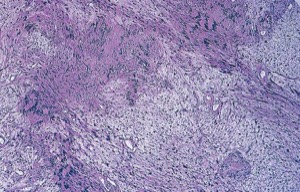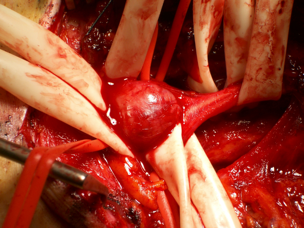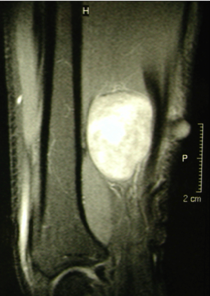Peripheral Nerve Tumours
Peripheral Nerves are all nerves in the body that are not in the brain or spinal cord. Peripheral nerves run from the spinal cord to the far reaches of the body, including the arms and legs.
To assist with nerve conduction, all peripheral nerves are surrounded by insulation, called myelin sheaths, which are made from Schwann Cells. A tumour can grow from the nerve itself, or more commonly, from the surrounding Schwann Cells. The two most common forms of peripheral nerve tumours are called Schwannoma and Neurofibroma. There are however, many other nerve tumours such as MPNST, granular cell tumours, desmoids etc. The more common Schwannoma and Neurofibroma are collectively referred to as Nerve Sheath Tumours.
To assist with nerve conduction, all peripheral nerves are surrounded by insulation, called myelin sheaths, which are made from Schwann Cells. A tumour can grow from the nerve itself, or more commonly, from the surrounding Schwann Cells. The two most common forms of peripheral nerve tumours are called Schwannoma and Neurofibroma. There are however, many other nerve tumours such as MPNST, granular cell tumours, desmoids etc. The more common Schwannoma and Neurofibroma are collectively referred to as Nerve Sheath Tumours.

Most Nerve Sheath Tumours occur spontaneously. In some individuals, the Nerve Sheath Tumours may be part of a syndrome that predisposes to multiple nerve tumours. Such syndromes include neurofibromatosis and multiple schwannomatosis. However, most people with a single nerve sheath tumour do not have a syndrome.

Microscopic view of a Schwannoma

Microscopic view of a Neurofibroma

- visible or palpable lump
- pain when the lump is tapped or bumped
- numbness
- weakness
- asymptomatic (identified incidentally on a scan etc)
Investigations and diagnostic tests performed include:
- Ultrasound
- Magnetic resonance imaging (MRI)
- Nerve conduction studies (NCS) and EMG

- Symptoms
- Tumour size
- Tumour growth
- Tumour location
- Neurological function
- Patient age
- Presence of single or multiple tumours
- Association with a syndrome
If Professor Gavin Davis determines that your tumour should be surgically removed, then he will discuss with you the
In all cases, the removed tumour is sent to the pathologist for microscopic analysis to determine whether the tumour is benign or malignant.
If the tumour is benign, surgical resection of the tumour usually provides a cure.
If the tumour is malignant, then further treatment may be required, including further surgery and radiotherapy.
- size/length of the scar
- the possible neurological outcomes
- whether you will require nerve grafts
In all cases, the removed tumour is sent to the pathologist for microscopic analysis to determine whether the tumour is benign or malignant.
If the tumour is benign, surgical resection of the tumour usually provides a cure.
If the tumour is malignant, then further treatment may be required, including further surgery and radiotherapy.